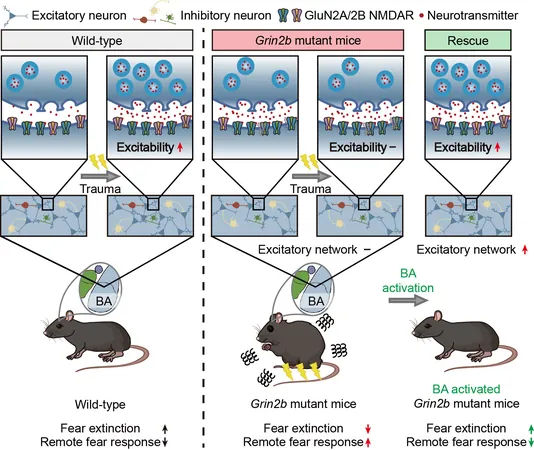
Unlocking the Secrets of Graphene: The Revolutionary Fluid-Like Behavior of Electrons
2025-09-17
Author: Rajesh
The Unconventional World of Graphene Electrons
Graphene, a one-atom-thick layer of carbon atoms, continues to baffle scientists with its unique properties. Recent research led by a team from the Indian Institute of Technology Bhilai reveals that electrons within graphene don’t just travel as independent particles; instead, they exhibit fluid-like behavior akin to a flowing liquid. This groundbreaking study dives deep into electron hydrodynamics, challenging the tenets of traditional solid-state physics and suggesting groundbreaking applications for more efficient electronic devices.
A Deep Dive into Electron Hydrodynamics
In the realm of solid-state physics, carrier transport hinges on various microscopic factors like scattering with impurities and phonons. The latest findings emphasize key characteristics of electron flow, revealing anomalies in resistance and deviations from the classic Wiedemann-Franz law. This raises tantalizing questions about the nature of electron movement in graphene, prompting theoretical frameworks that connect thermodynamic principles to this fluid-like electron behavior.
Visualizing Graphene's Fluid-Like Flow
A standout feature of this research is the visualization of fluid-like electron flow within graphene. Scholars have successfully demonstrated that electrons can act like a viscous fluid, reshaping our understanding of how these charge carriers operate under certain conditions. Researchers like Sulpizio and his team have provided compelling evidence of this unexpected behavior, while theoretical groundwork from previous studies elaborates on the idea of graphene as an ideal fluid.
The Impact of Pressure and Carrier Density on Electron Behavior
The study meticulously explores the relationship between pressure and carrier density in graphene. Findings indicate a pronounced connection between these parameters at a fixed temperature, showcasing how pressure influences the behavior of both electrons and holes around the charge neutrality point. Notably, the research underscores that electron transport flourishes under high chemical potentials, while hole transport reigns at negative potentials, further complicating our understanding of charge dynamics.
Revolutionary Insights into the Wiedemann-Franz Law
Remarkably, this research also reveals substantial violations of the Wiedemann-Franz law in ultra-pure graphene samples, with enhancements peaking at an astonishing 22 times the standard value. Analytical comparisons confirm a significant breach of this law near the Dirac point, suggesting that graphene might behave as a quantum critical fluid—a newly discovered status that paves the way for innovative technological advancements.
A Future Fueled by Graphene's Potential
As researchers continue to unravel the complex interactions of charge carriers in graphene, the implications of this fluidic behavior are profound. From smarter electronics to improved energy systems, understanding electron hydrodynamics may unlock a future where graphene principles revolutionize technology as we know it. This study not only sets the stage for advanced applications but also invites further exploration into the depths of quantum mechanics and material science.



 Brasil (PT)
Brasil (PT)
 Canada (EN)
Canada (EN)
 Chile (ES)
Chile (ES)
 Česko (CS)
Česko (CS)
 대한민국 (KO)
대한민국 (KO)
 España (ES)
España (ES)
 France (FR)
France (FR)
 Hong Kong (EN)
Hong Kong (EN)
 Italia (IT)
Italia (IT)
 日本 (JA)
日本 (JA)
 Magyarország (HU)
Magyarország (HU)
 Norge (NO)
Norge (NO)
 Polska (PL)
Polska (PL)
 Schweiz (DE)
Schweiz (DE)
 Singapore (EN)
Singapore (EN)
 Sverige (SV)
Sverige (SV)
 Suomi (FI)
Suomi (FI)
 Türkiye (TR)
Türkiye (TR)
 الإمارات العربية المتحدة (AR)
الإمارات العربية المتحدة (AR)